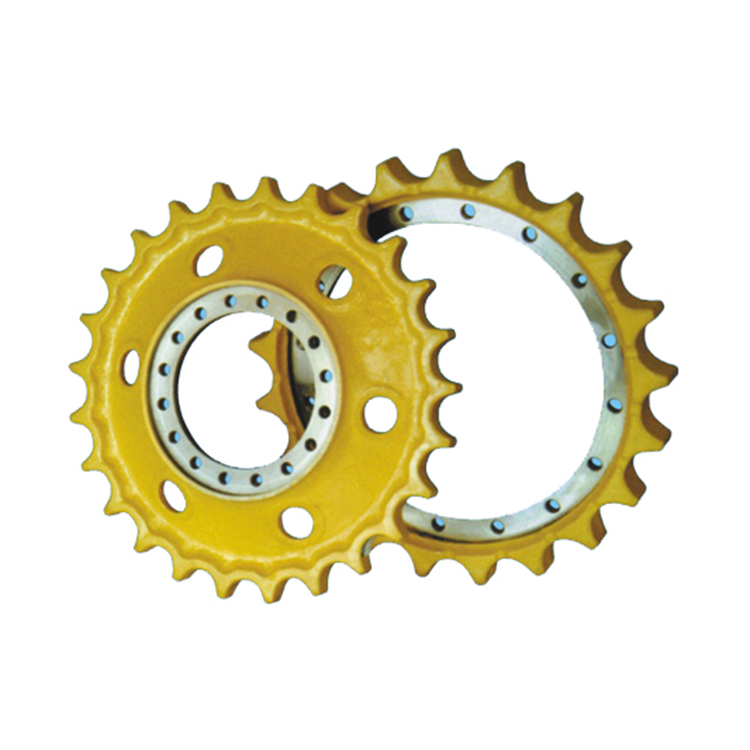Caterpillar provides four maintenance tips to extend steel undercarriage life.
With almost half of the owning and operating costs of a track-type tractor attributed to the steel undercarriage components, proper maintenance procedures have a dramatic impact on the bottom line. Regardless of the type of undercarriage components or type of tractor or excavator, a few simple steps can prolong undercarriage life. Hyundai Drive Rim

There are numerous variables that determine the life of an undercarriage, many of which can’t be controlled, such as the soil conditions and rainfall. However, undercarriage maintenance is controllable. Tim Nenne, undercarriage market professional, Caterpillar , provides the following maintenance tips that can reduce undercarriage costs.
Improperly adjusted tracks are the No. 1 reason for reduced wear life and performance. As such, it’s critical to keep tracks adjusted to the manufacturer specifications to lower undercarriage costs.
Tight tracks can make the undercarriage wear four times faster! When tracks are too tight, the contact loads between the components go up substantially (see graph at right). These higher loads increase the rate at which components wear and decrease the overall wear life of the undercarriage. Tight tracks also increase the risk for dry joints, put additional stress on drivetrain components and increase fuel usage.
If the tracks are too loose, they can drag on the top of the roller frame, which is an additional wear point on the links.
When you change applications, run the machine for an hour on the new site and then set the track tension to the correct specification. Re-check the tension as conditions change. For instance, if it rains overnight or during work hours, that will change the amount of packing and track tension will need to be readjusted.
There have been cases where material on the top of the roller frame has reduced undercarriage life by 50%. Cleaning out packed materials at the end of the day is a simple way to increase the wear life of the undercarriage.
Material can easily build up on the top of the roller frame during normal operation. If the material is allowed to dry and harden overnight, it becomes much more abrasive to the undercarriage components. Removing this material at the end of the work day is easier and will increase component wear life.
Track guiding keeps your undercarriage where it belongs — in the rollers! If a track is not properly guided, the link assembly can get on the outside of the rollers during a transition or during an encounter with larger ground objects. This results in high internal and external link assembly loads and can eventually lead to dry joints or link cracking. Improper guiding is one of the top reasons for random dry joints.
Follow the manufactures guidelines to determine which guiding level is best for your application.
As part of your daily walk-around inspection each morning or at the beginning of a shift, it’s a good idea to do a visual inspection of the undercarriage to look for loose or missing bolts, oil leaks, unusual wear patterns, loose or bent shoes, debris stuck in the undercarriage, etc. Taking just a few moments to identify and correct any issues can improve undercarriage life and lower the cost per hour substantially.
An operator plays a vital role in determining the overall life of an undercarriage, right behind track tension and underfoot conditions. Sharp turns and counter rotations increase contact stresses between components. These maneuvers apply high stress to the tracks by braking one side or the other. If they are done more slowly, there is a lot less harm to the undercarriage. As speed increases, the amount of damage increases.
High-speed reverse should also be avoided. On fixed bushing track, the bushing and sprockets will see increased wear rates while running in reverse. There is sliding wear between the bushing and a sprocket at any speed. But as the speed increases, the amount of load and contact changes, which increases wear rates. Speed also tends to move the bushing out of the root of the sprocket to a point higher on the sprocket tooth, which also changes the contact pattern and results in higher wear.
Side-hill operation accelerates undercarriage wear, especially on the downhill side of the machine. This is also where the track guides and roller flanges on both sides of the machine will work the hardest and see higher wear rates. This is why it is suggested that customers turn the machine around so that both sides of the machine see equal time on the downhill side.

ID1354/37 Finally, listen to the machine. If something doesn’t sound quite right, investigate. You want to catch a frozen roller or other component failure before the component causes further undercarriage system damage.